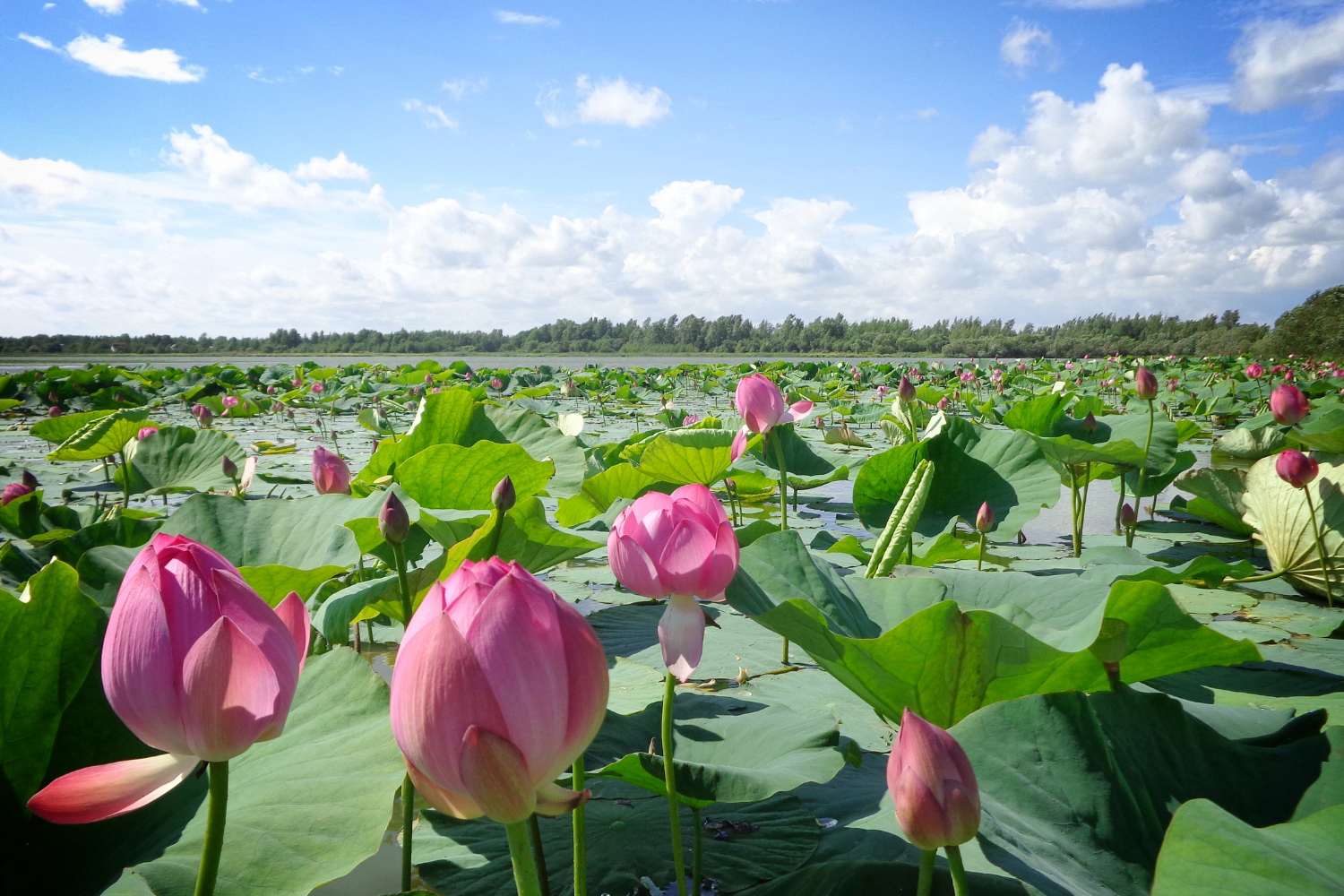Lotus flowers bloom again in Kashmir's Wular Lake after 30-year absence thanks to major cleanup project, reviving ecosystem and cultural traditions.

Table of contents
After more than three decades of absence, lotus flowers have returned to bloom in Wular Lake, nestled in the heart of Kashmir’s valley. This freshwater basin, among Asia’s largest, was once renowned not only for its scenic beauty but also for sustaining local communities through the harvest of nadru, the edible lotus stem — a delicacy treasured in traditional Kashmiri cuisine.
The transformation didn’t happen overnight, and the story behind it reveals both nature’s resilience and human determination. In the 1990s, a series of devastating floods blanketed the lake’s bottom with silt, suffocating the plants and dramatically reducing biodiversity. Within just a few years, the lake’s surface area contracted by more than half, turning into a degraded zone that was even used as a dumping ground. It’s hard to imagine such a vital ecosystem reduced to little more than a wasteland, yet that’s exactly what happened to this once-pristine water body.
Restoration through environmental cleanup
The turning point came in 2020, when the Wular Conservation and Management Authority (WUCMA) launched an ambitious environmental recovery project. The scale of the undertaking was enormous — workers removed millions of cubic meters (cubic feet) of sediments and cut down over two million willow trees that had been promoting debris accumulation.
This massive intervention made it possible to restore the lake’s original depth of approximately 14 feet (4.3 meters) and improve the flow of the Jhelum River. The results speak for themselves today: lotus flowers have reappeared, and with them comes the hope of a more solid economy for families who have always lived off fishing and harvesting natural products. Sometimes environmental restoration requires what might seem like dramatic measures — removing millions of trees sounds counterintuitive for an ecological project — but in this case, it was precisely what the lake needed to breathe again.
After 30 years Kashmir’s Wular lake is blushing with lotuses.. beauty captured but couldn’t do justice to the real time view !! #ClimateJustice #kashmir #GoodMorningTwitterWorld pic.twitter.com/ZePIyfbhB5
— Shabinaa Sultana (@Shabeena_CM) August 5, 2025
A tradition reborn
The return of nadru carries significance that extends far beyond economics — it’s deeply cultural. For generations, these stems have been the stars of typical wazwan dishes, Kashmir’s traditional feast that represents the pinnacle of regional cuisine. With their disappearance, many recipes had been forgotten, relegated to the memories of grandmothers who could no longer find the ingredients that defined their heritage cooking.
Today, chefs and families are rediscovering those “grandmother’s flavors,” symbols of collective memory and identity. There’s something profoundly moving about the idea that a flower’s return can resurrect not just an ecosystem, but entire culinary traditions that seemed lost forever. The nadru isn’t just food — it’s a connection to ancestral knowledge, a link between past and present that had been severed by environmental degradation.
Wular Lake Revives Its Lotus Charm After 25 Years
After decades of disappearance, vibrant #lotus blooms have returned to #Asia’s largest freshwater lake #Wular in #Bandipora rekindling hope for locals whose lives and livelihoods are tied to its waters. See photos by #UmarQayoom pic.twitter.com/hO7B68mLyf— Kashmir Life (@KashmirLife) July 21, 2025
An important environmental message
According to experts, the lotus revival serves as tangible proof that ecological restoration efforts can bring back to life not only ecosystems, but also the bonds between people and their territory. Wular Lake functions as a crucial habitat for migratory birds and represents a key element in the region’s environmental resilience.
The blooming after three decades stands as a concrete example of how landscape stewardship can regenerate biodiversity, local economies, and cultural traditions all at once. It’s a reminder that environmental conservation isn’t just about saving pretty flowers or maintaining tourist attractions — it’s about preserving the intricate web of relationships that connect human communities to the natural world that sustains them.
The lake, which spans roughly 24 square miles (62 square kilometers) at its current size, demonstrates that even severely damaged ecosystems can recover when given the right conditions and dedicated care. As climate change and environmental degradation threaten ecosystems worldwide, Kashmir’s lotus revival offers a beacon of hope — proof that with commitment, resources, and scientific expertise, we can indeed turn back the clock on environmental destruction.
A breathtaking view of lotus flowers blooming at Wular Lake after a gap of over 30 years pic.twitter.com/mID5g3zUk3
— Basit Zargar (باسط) (@basiitzargar) July 20, 2025
